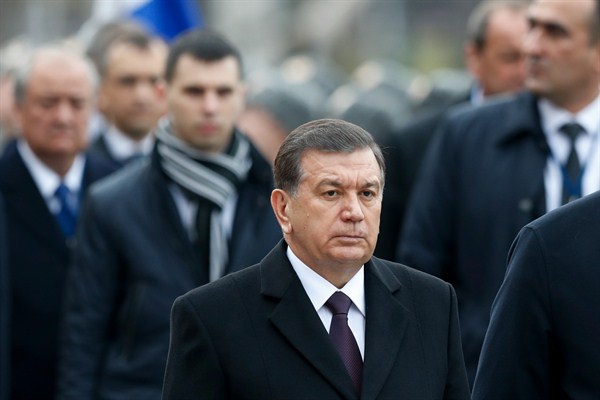Last week, Abdulla Aripov, the prime minister of Uzbekistan, and Emomali Rahmon, the president of Tajikistan, agreed to allow their citizens to visit each other’s countries without a visa for up to 30 days, removing restrictions put in place between the adversarial regimes back in 2001. The move is the latest sign that Uzbekistan, one of the world’s most closed countries, is slowly opening up.
President Shavkat Mirziyoyev has spearheaded this opening since he replaced Islam Karimov, who ruled the country for 27 years before he died in September 2016. Speaking at the United Nations General Assembly in New York last September, Mirziyoyev said his ultimate goal is to create a democracy in his country. But the policies adopted so far seem to be more about restructuring economic relations to benefit the elite than genuinely attempting to transfer power to the wider Uzbek population.
Mirziyoyev has purged ministries of their Soviet-era technocrats, replacing them with a cadre of younger bureaucrats, some of whom have been educated in the West. The political sphere has since seen some marginal reforms. The security services’ widely feared “black list” of opponents to the regime has been cut from 17,582 to 1,352 names. At least 16 political prisoners have been released, including journalist Muhammad Bekjanov, who had been in prison for 18 years. Beginning in March, law enforcement will be prohibited from using torture to extract confessions. And last summer, the government decreed that children could no longer be used as forced labor during the cotton harvest. A hopeful atmosphere prevails among the independent media and civil society, which are now allowed to explore topics previously considered taboo, but still operate with severe restrictions.

